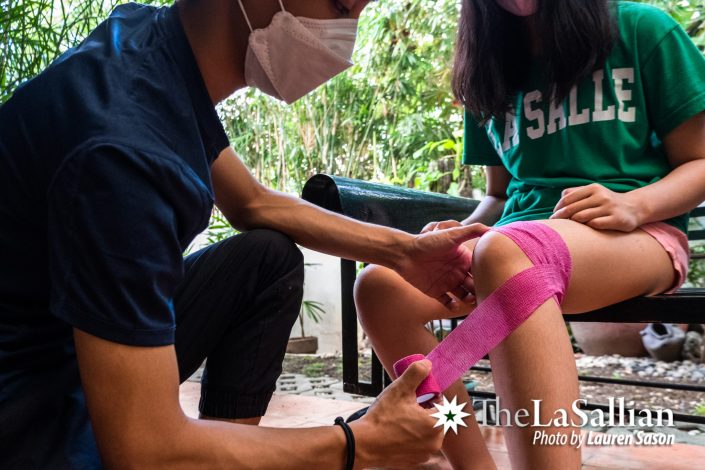The roaring crowd, the cheering banners, the rhythmic yells, and the blasting drum beats—these are the traditional energy boosters of athletes as they perform their best under the spotlight of an arena. But behind their stellar moves and highlight plays are aches and pains endured from refining their skills during training. Fortunately, there are people behind closed doors who accompany them in their struggles and help them remain in their best form: these are their physical therapists (PTs).
As health care practitioners specializing in body movement treatment to improve the physical functioning of the body and to alleviate muscular pains, PTs play an important role in every athlete’s career. They monitor an athlete’s physique and lead them to regain their peak condition after injuries happen, while also guiding them throughout the process until they step into the limelight with confidence again. Through all the competitions that athletes enter, PTs are the unsung heroes behind the glories of athletes as they conquer all their battles.
As games are put on hold due to the pandemic, athletes maintain their own routines at home. Despite the unfortunate circumstances, PTs still monitor Lasallian athletes virtually. DLSU’s Head PT Teddy Fabian and his fellow PT Marco Luis Villanueva impart their methods and the challenges they face with this new setup.

Telehealth treatment
To ensure the monitoring and treatment of the athlete’s conditions, Fabian shares that their team adapted a telehealth setup to continue delivering their expertise for the DLSU varsity teams. Through online functional assessments and movement screens, the PTs are able to guide the athletes through the process, while continuously monitoring their progress, especially the post-operative patients.
Villanueva also assures that injured athletes are provided regular consultation sessions. With this setup, athletes are expected to be actively involved in the procedures, such as particular exercise routines, which PTs refer to as the “active therapy approach”.
Student-athletes need proper care and constant tracking of their treatment for their respective injuries. Unfortunately, the lack of physical contact hinders the PTs from accurately determining the type and severity of an injury. Villanueva notes how strenuous it is to determine an ailment behind the screen, “We are more prone to assessment errors compared to a face-to-face setup,” he admits. Additionally, the staff discloses that one mistake from monitoring their progress could aggravate an injury that could hinder the betterment of the athlete’s wellbeing. While on-site training is already difficult enough for PTs to teach student-athletes to perform a certain exercise, the difficulty has drastically increased for PTs since proper form is needed to dispatch with their movement.
New normal set-up
As most professions have had to shift to working from home during this pandemic, so have school-based PTs who now use different online platforms like Zoom in order to check up on student-athletes. Athletes are now in the comfort of their own homes—some in their home provinces while others out of the country. Much like students, the primary complication that each individual faces during online sessions would be their internet connection. PTs like Fabian are thus having a difficult time checking up on athletes who are experiencing connectivity issues.
The lack of motivation is also a crucial consideration for student-athletes. With the UAAP on hold, it is harder for athletes to look for inspiration. On their part, it bears a more burdensome situation to balance both academics, training, and physical therapy when all are being conducted behind the screen. This could result in burnout, a common phenomenon of which athletes are no exception. Villanueva mentions that they also supervise the mental health of the athletes. “We need to take in mind that the mental [or] psychological aspect has a big effect on the physical performance of athletes.”
With the constant need for student-athletes to undergo physical therapy even amid the pandemic, it is a necessity to adapt to the present situation. The Office of Sports Development has done well with the help of some online resources. PTs have also decided to research and expand their knowledge when it comes to assessing the athletes behind the screen. As Fabian assures, they are “learning new things that may help us improve our assessments and testing in online consultations.”
